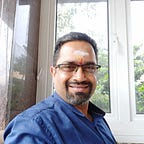kanyAvaraNamu — The Art of Matchmaking in the Kamasutra
Kanya Avaranamu, the third book of the Kamasutra, focuses on the process of selecting an appropriate bride for a suitable groom. It delves into the intricacies of matchmaking, considering factors such as compatibility, character, and social standing. Vatsyayana’s insights in this book 3 guide on creating harmonious unions and ensuring a successful marriage.
Human Effort (Purushakara) vs. Divine Will (Daivakara)
The Kanya Avaranamu emphasizes the importance of a groom’s qualifications and readiness before seeking a bride. Let’s explore these two modes of matchmaking:
Human Effort (Purushakara):
- In this mode, the groom actively participates in the process of finding a suitable bride. He seeks assistance from knowledgeable individuals, such as elders, scholars, or matchmakers.
- The groom considers various factors, including the bride’s family background, character, education, and social standing.
- Compatibility and shared values play a crucial role in this approach.
Divine Will (Daivakara):
- According to this mode, the union between a groom and a bride is guided by fate or divine intervention.
- It suggests that certain marriages are predestined, and external forces play a role in bringing the couple together.
- Rituals, astrology, and auspicious timings are often considered in this approach.
Both methods recognize the intricate balance between human agency and cosmic forces in the sacred journey of marriage.
Types of Weddings and the Importance of Equality
The process of matchmaking involves more than just individual qualifications; it extends to social interactions, community events, and shared values. Let’s delve into the different types of weddings and the significance of equal matches:
Types of Weddings:
- Brahma Vivaha: This type of wedding involves a groom who is well-versed in the Vedas and a bride from a respectable family. It symbolizes the union of knowledge and virtue.
- Prajapatya Vivaha: Here, the groom marries a bride who is the daughter of a respected man. It signifies a harmonious alliance between families.
- Arsha Vivaha: In this type, the groom gives a symbolic gift (such as a cow or gold) to the bride’s family. It emphasizes mutual respect and trust.
- Daivata Vivaha: The bride’s family offers her as a gift to a deserving groom. It reflects devotion and faith.
Equality in Marriage:
Equality is essential for various aspects of life, including marriage:
- Competition: When partners are equally matched, they can challenge and inspire each other to grow.
- Play: Shared interests and compatibility enhance playfulness and joy in the relationship.
- Friendship: Equal footing fosters companionship, trust, and understanding.
- Marriage: A balanced partnership ensures mutual respect, support, and a strong foundation.
Remember, a successful marriage is built on mutual understanding, respect, and shared aspirations.
Kanyavaranamu in Social Ceremonies
Kanyavaranamu, a significant practice in traditional Indian arranged weddings, involves both prospective grooms and brides actively participating in social events and ceremonies. By attending other weddings, functions, and gatherings, they present themselves as potential brides or grooms, aiming to catch the attention of elders and families.
This practice serves several purposes:
- Social Networking: Attending events allows the prospective brides and grooms to network with others in their community. It provides an opportunity to meet eligible individuals and their families.
- Visibility: By actively participating, they become visible to a wider circle of people. Elders and family members observe their behavior, appearance, and interactions, which can influence their matchmaking decisions.
- Assessment: Elders assess the candidates based on various factors, including family background, education, personality, and compatibility. Observing them in social settings helps form opinions about their suitability for marriage.
- Informal Introductions: These events serve as informal introductions. Families may express interest or inquire about the prospects, leading to further discussions and potential alliances.
In summary, kanyavaranamu is a dynamic process where prospective brides and grooms actively participate in social gatherings, presenting themselves as potential life partners. It’s a blend of tradition, social interaction, and matchmaking. — Overall, the secret of success in the Indian system of arranged marriages and flourishing cultural societies!
Vatsyayana’s Guidelines for a Harmonious Union:
Vatsyayana’s guidelines on choosing a suitable bride and groom in the context of the Kamasutra emphasize not only physical attributes but also the overall well-being and compatibility of the couple. Let’s explore these guidelines further:
Physical Appearance:
- Vatsyayana acknowledges the importance of physical attractiveness. However, it’s essential to recognize that beauty is subjective and varies across cultures and individuals.
- The intention behind considering physical appearance is to ensure that both partners find each other appealing. A mutual attraction contributes to a harmonious relationship.
Defective Build of Body and Mind:
- Vatsyayana advises against choosing partners with significant physical or mental defects.
- This recommendation is not meant to exclude anyone from society but rather to promote a healthy and fulfilling marital life.
- A partner with severe physical or mental challenges may face additional difficulties in daily life, affecting the overall well-being of the couple.
Exclusions Due to Diseases:
- Vatsyayana suggests avoiding matches where either the bride or groom suffers from serious illnesses.
- Again, this is not about exclusion but about ensuring a stable and supportive partnership.
- Chronic illnesses can impact the quality of life, and considering health compatibility is essential for the couple’s future.
Overall Well-Being and Compatibility:
- Beyond physical appearance, Vatsyayana emphasizes compatibility in character, values, and temperament.
- A successful marriage involves shared goals, effective communication, and emotional understanding.
- The intention is to create a strong foundation for a lasting relationship.
In summary, Vatsyayana’s guidelines aim to promote healthy unions, where both partners thrive physically, mentally, and emotionally. These considerations contribute to the well-being of the couple and, by extension, society as a whole. 🌟🤝👰🤵
